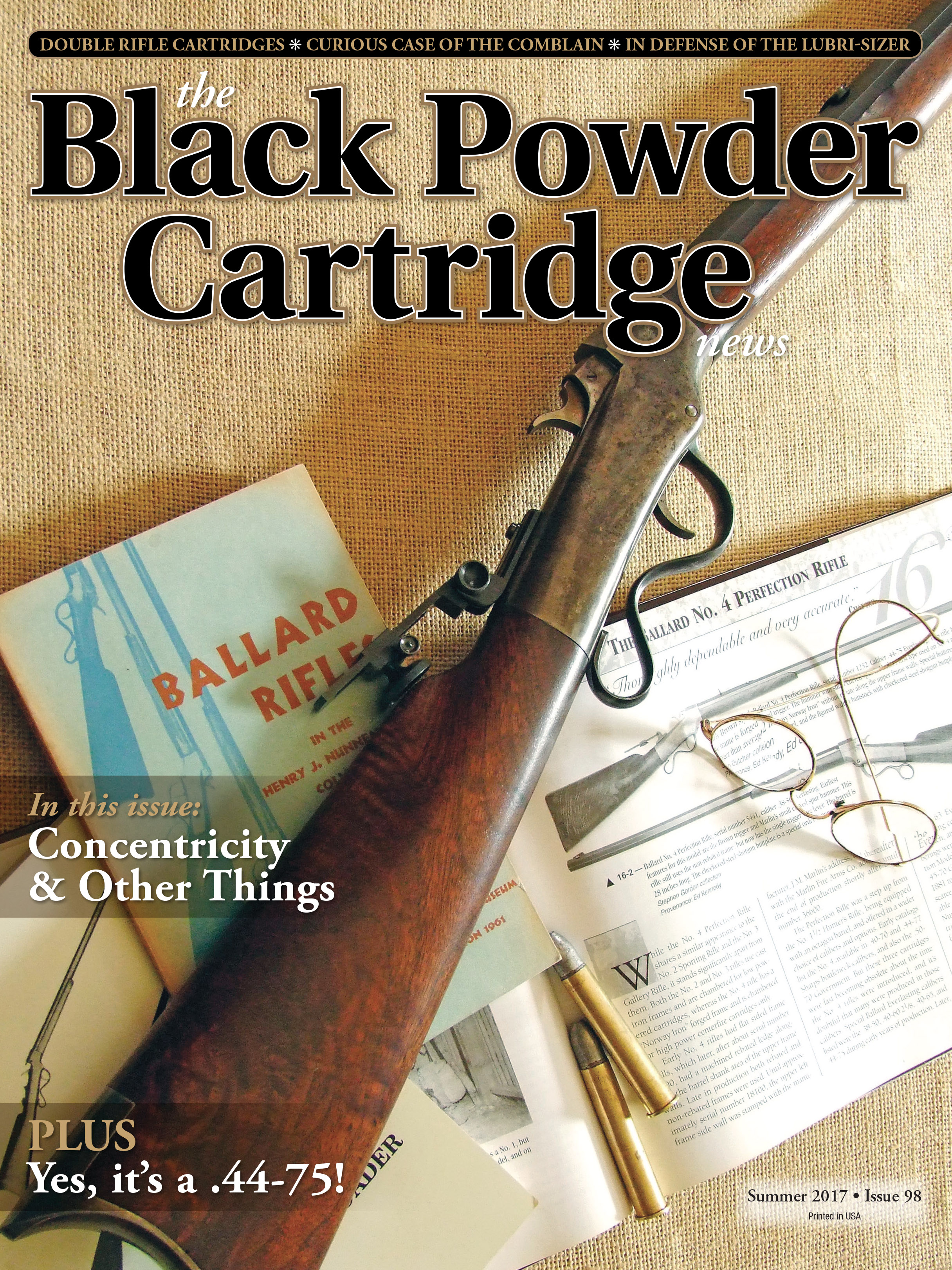The Curious Case of the Comblain
feature By: Croft Barker | June, 17
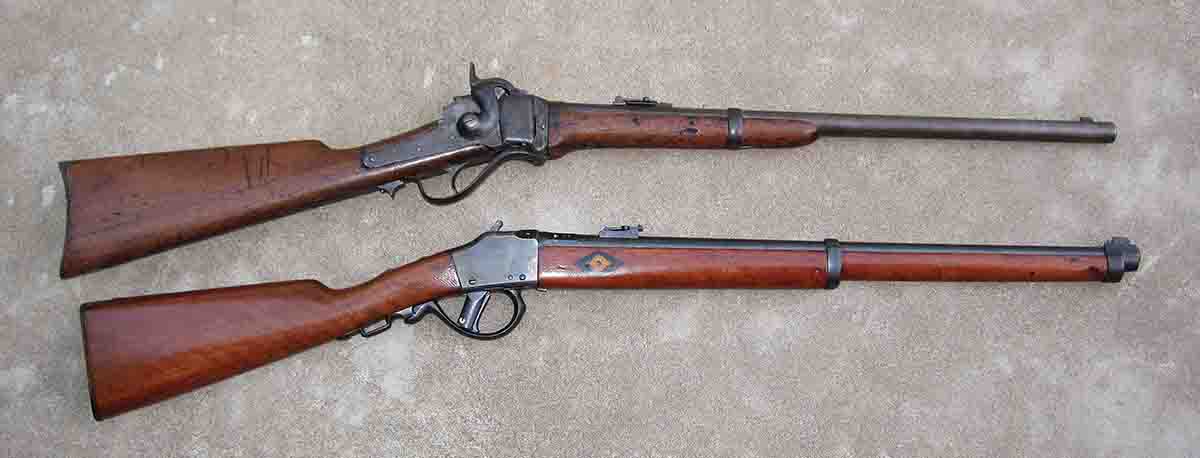
Invented by Hubert-Joseph Comblain, the Carabine de la Garde Civique Mle 1870 was issued to the Belgian Civil Guard in 1870. Manufactured by a four-company named Petit Syndicat, consisting of Ancion, Dresse-Laloux, Auguste Francotte and Pirlot-Fresart, this rifle had a 31.6-inch barrel and was chambered in 11.4x50R. In 1871, the same company made a carbine version of the Mle 1870 rifle that was issued to Belgian Cavalry regiments. This model was the Mousqueton Mle 1871 with a 17.9-inch barrel that was chambered for the shorter, less powerful 11.4x43R cartridge. Approximately 7,500 were manufactured.

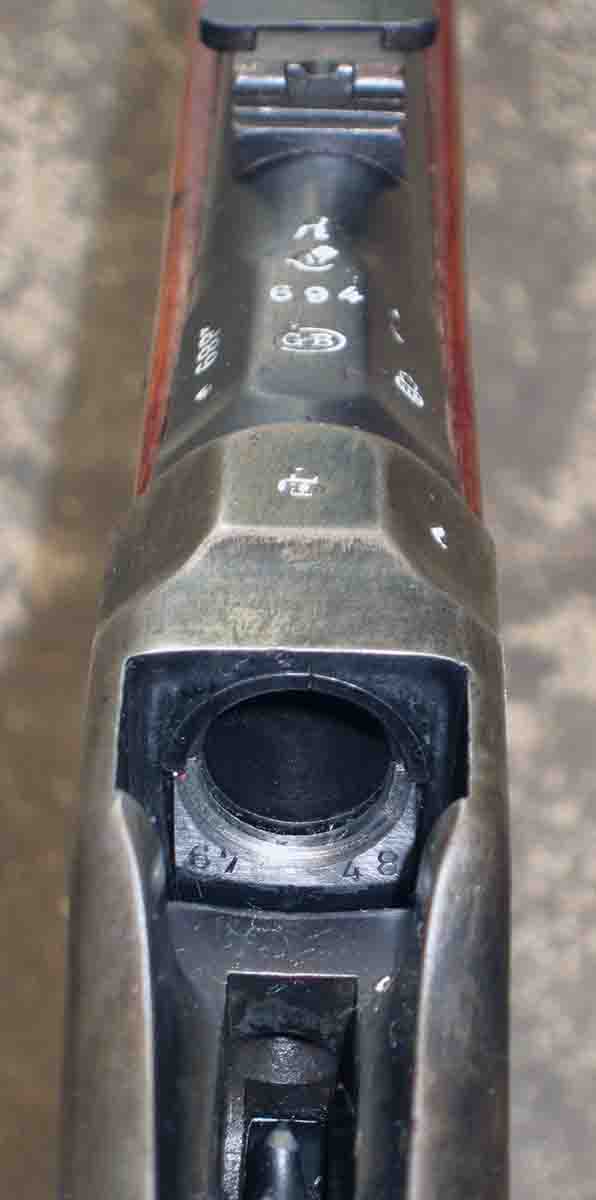
Several different models and variants of the Comblain were made for the armies of Chile, Peru, Brazil, Morocco and Greece. Brazilian models have shrouded hammers and no half-cock while the Greek issue (Mylonas Model 1872) is a somewhat different design manufactured by Nagant in Liege. According to Jonathan Kirton8, the Comblain “. . . remains today one of the least known and most misunderstood of the military rifles of its era.” After a fair amount of research, I completely agree with Mr. Kirton, as there is lots of conflicting information on basic design details making identification of specific models difficult. Determining which army (Chilean, Brazilian, Belgian, etc.) is important, because chamber dimensions, and therefore cartridges, vary from country to country.
In order to generate accurate ammunition for my antique black powder rifle, a chamber cast was poured and then the barrel was slugged. Cartridge manuals were consulted to learn which cartridge fit (or nearly fit) the chamber of my new toy. By comparing the chamber cast to published case dimensions, correct brass can be ordered (if available) or parent brass can be acquired that can be modified into a case that will serve. As bullet diameter for my Comblain is
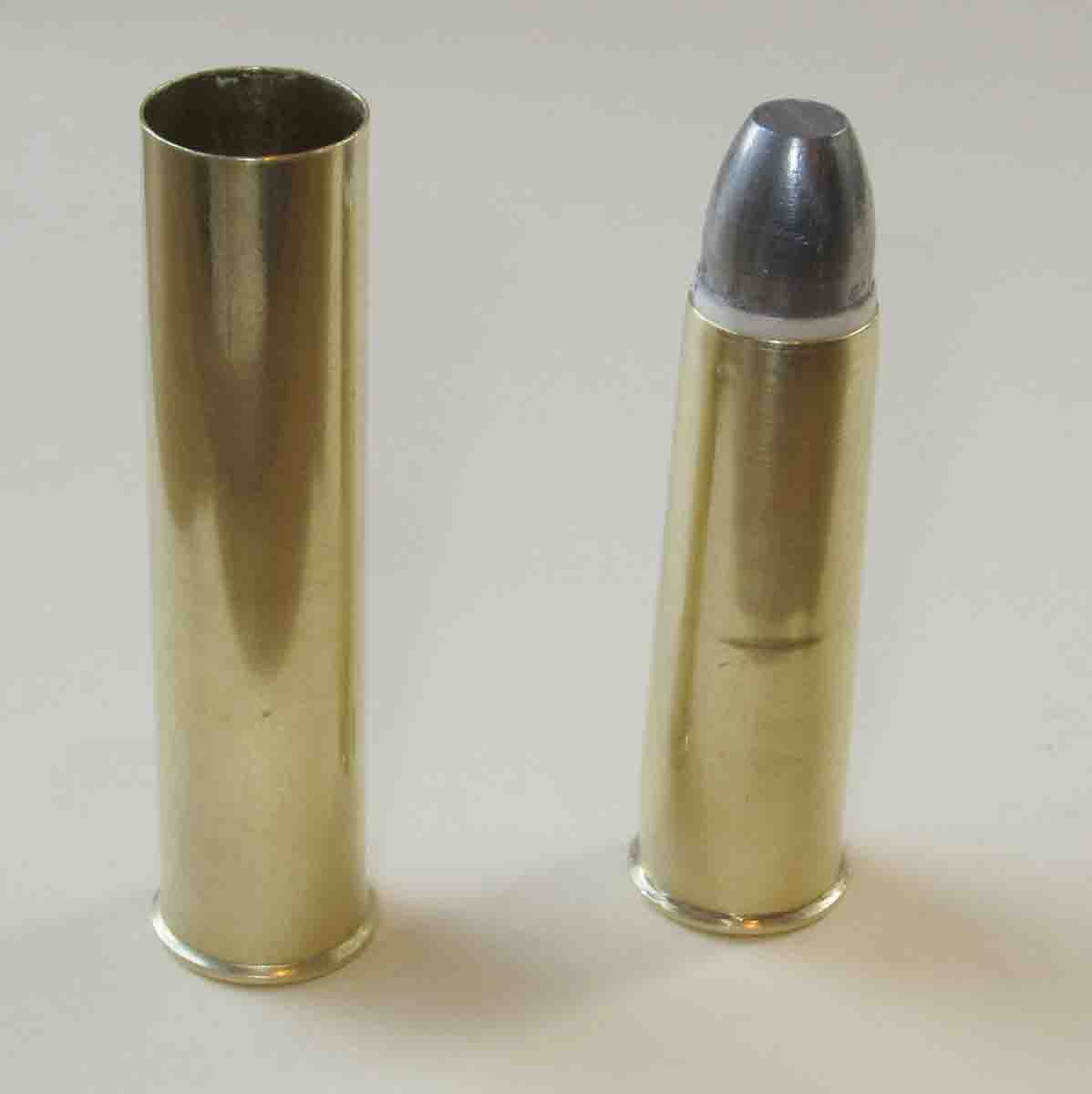
At this point it is interesting to note that cartridge collectors and descriptions in cartridge manuals of antique rounds do not necessarily translate into accurate ammunition for antique rifles. The basic problem is caused by several issues: First, there are differences in tolerances between ancient cartridge manufacturers (lack of standardization). Second, the manuals’ failure to state if bullet diameter is based on groove or bore diameter and whether the bullet is paper patched or naked. Third, black powder military chamber dimensions are usually oversized to allow continued firing when fouled. Some comfort is found in published case dimensions that are generally correct as long as one accepts dimensional variances between ninteenth-century manufacturers.
Hoyem was consulted first, and I zeroed in on three Comblain cartridges, all with necked cases (see accompanying table).
The dimensions shown in the table raised at least two issues. My chamber cast shows a tapered case with no neck, and
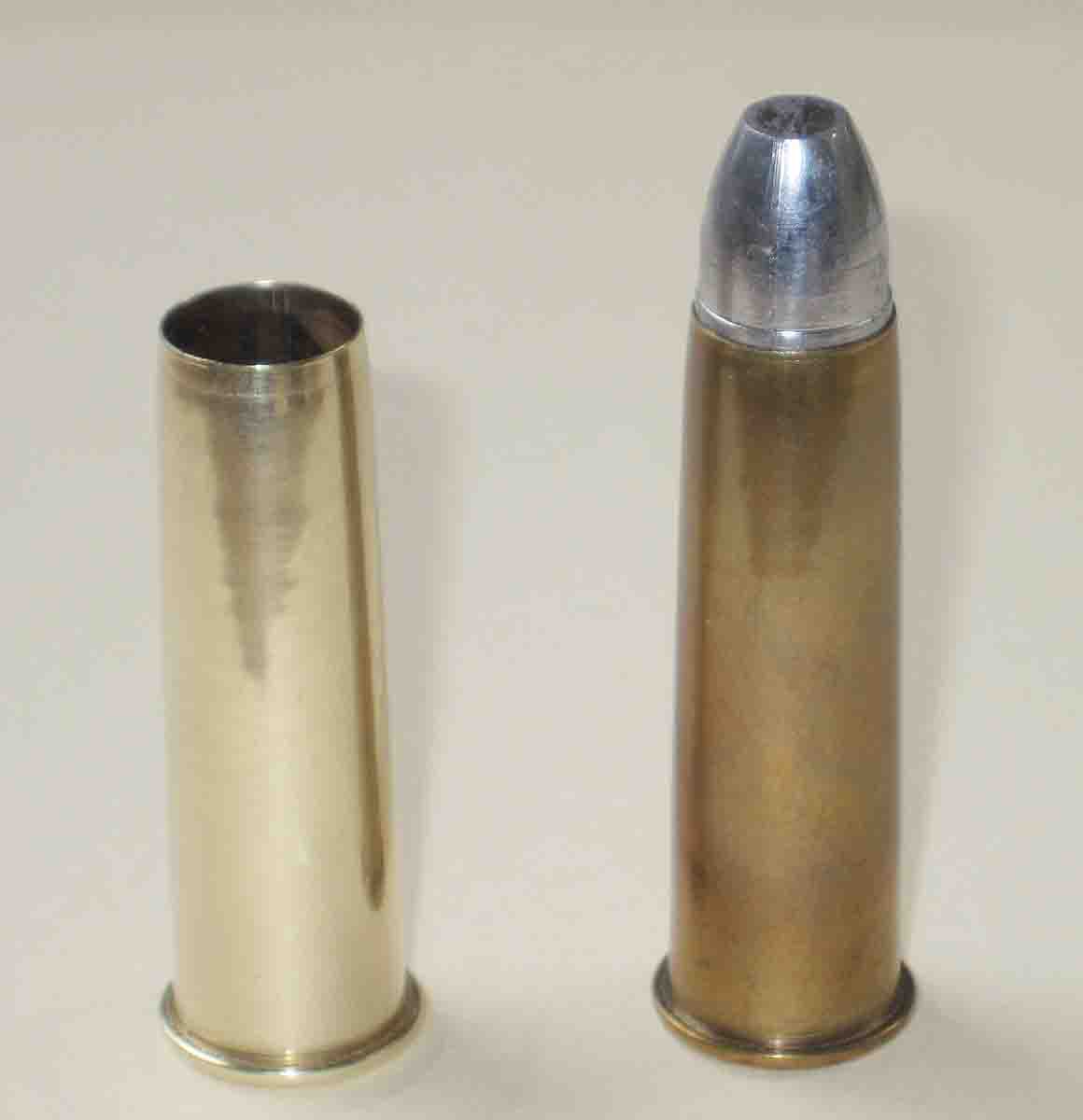
Based on the chamber cast, it became obvious that I would have to generate a Comblain wildcat cartridge, as published neck diameters were far too small. Another way of putting it is that original necks for my carbine were unsupported in the chamber and would lead to lots of split brass. What was needed was a longer case that would place the neck farther into the tapered chamber where it would be supported when fired. The other advantage of a longer cartridge is that the bullet would be better aligned with the bore for enhanced accuracy and minimum leading. Four potential parent cases were ordered from Buffalo Arms (see accompanying table below).
When making a new case from parent brass, ease of conversion is of
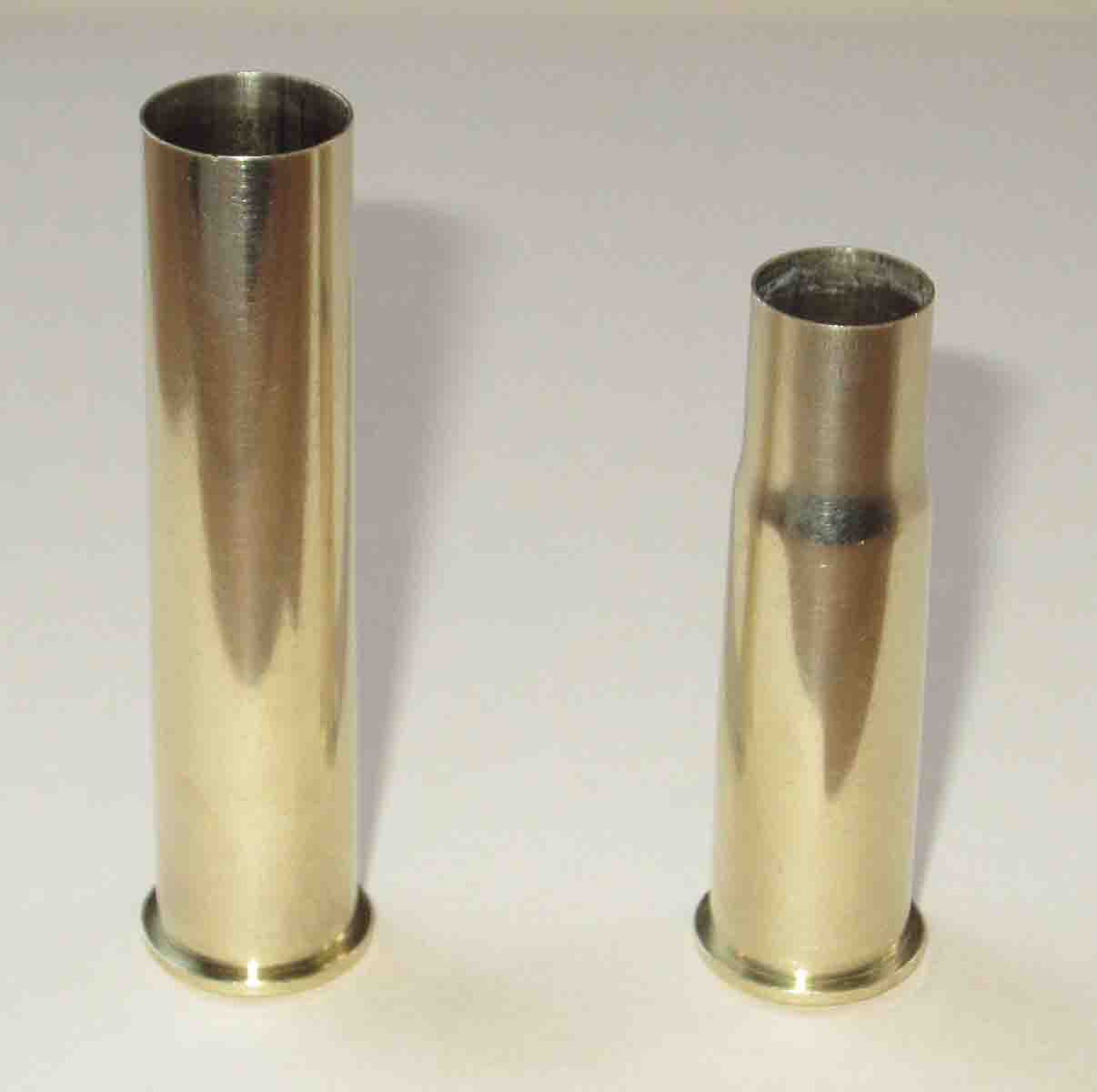
1) The .43 Beaumont will chamber and requires only shortening, neck expanding and fireforming. Shellholder: RCBS .50-90.
2) The 32 Gauge rim diameter is small and may not extract in some rifles. Trim the case to 1.95 inches, size in .50-70 seating die until the mouth will enter a .50-70 full-length die. After sizing in the .50-70 FL die, insert the case .780 inch into the .45-70 seating die and it will chamber. Neck expand and fireform. Shellholder: .50-70 Government.
3) The 11.4x50R Brazilian Comblain has a thicker Mauser-type rim. After cutting to length, the case is inserted into a .45-70 FL die until it will chamber (about .5 inch), then expanded and fireformed. Shellholder: RCBS .50-90.
4) Forming from .50-90 Sharps cases is presently being developed.

I would like to thank Michael Carrick for a packet of invaluable information on the development of both military and civilian Comblains. This packet contained a scholarly series of articles by writer Jonathan Kirton appearing in a British publication, Historical Breechloading Small Arms Association, Vol. 3, No. 7, December 2005 edition, as well as The Gun Report, October, November and December 2004 issues. Mr. Carrick specializes in research and identification of pre-1900 firearms and swords. He may be reached at Mike@MikeCarrick.com or via fax at 1-503-364-3375.
.jpg)
References:
1. The History and Development of Small Arms Ammunition, Revised Vol. 2. Author, Hoyem.
2. Cartridges of the World, 10th edition. Author, Barnes.
3. DMW Cartridges 1896-1956. Author, Datig.
4. Buffalo Arms Co. Catalog No. 35
5. Arms of the World-1911, ALFA Catalogue. Author, Adolf Frank. Export Gesellschaft. Reprinted by Digest Books, Inc.
6. Single Shot Rifles and Actions. Author, de Haas.
7. Rifles of the World, 2nd edition. Author, Walter.
8. Articles noted above. Author, Kirton.


